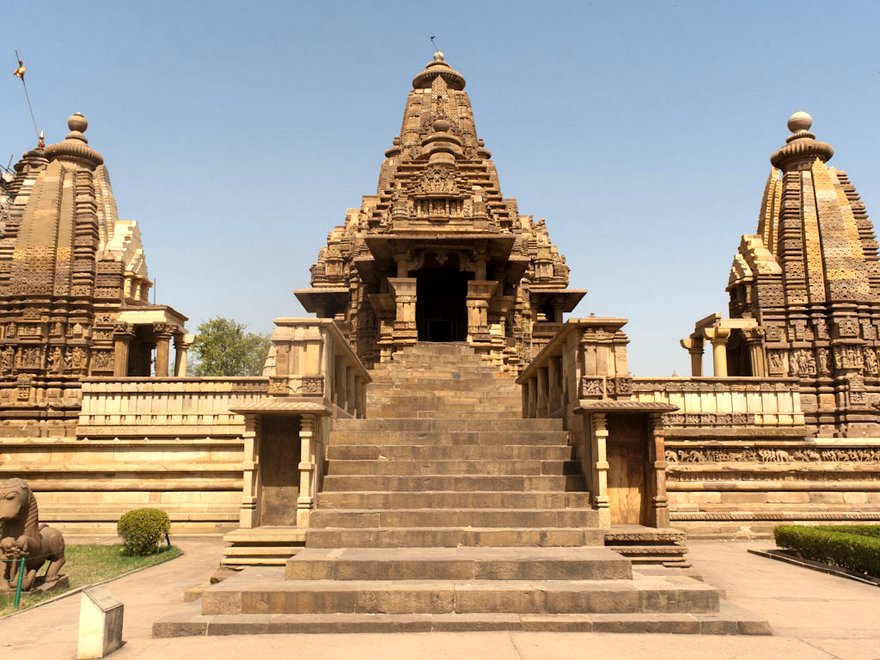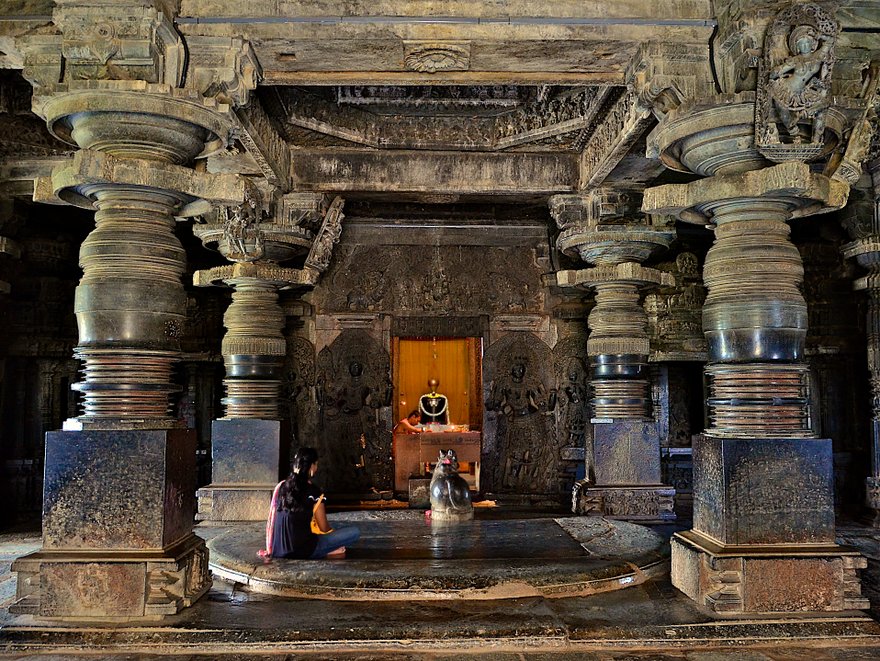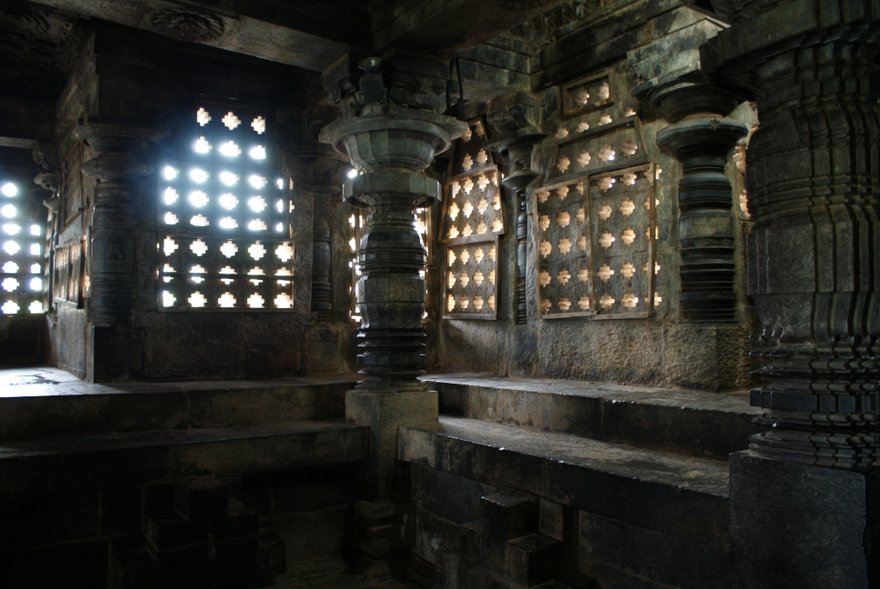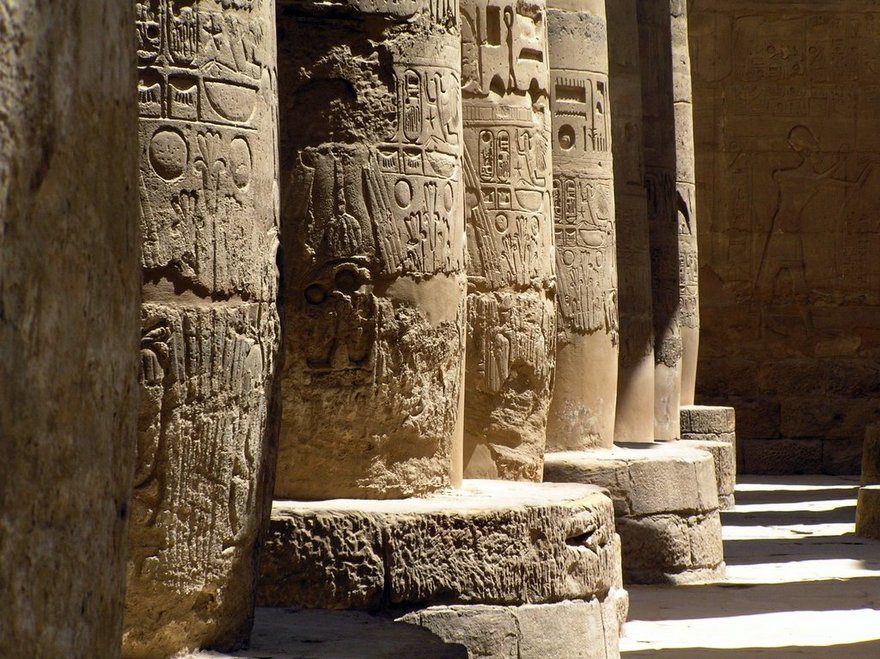The very nature of human perception is such that, right now, whatever a human being is involved with, that will be the only truth for him in his experience.
Right now, most people are involved with the five sense organs and that seems to be the only truth, nothing else. Sense organs can only perceive that which is physical and because your perception is limited to the five sense organs, everything that you know as life is only the physicality – your body, your mind, your emotion and your life energies are all physical.
[wp_ad_camp_1]
If you see the physical existence as a fabric, then we can say you are living on the fabric of the physical. You are walking on this cloth and what you are walking on is all that is real.
When you look up, there seems to be a vast emptiness above, but even there you only recognize the physical. You look at the stars or the sun or the moon – this is all physical. You don’t perceive that what is not physical, isn’t it?
What you call a temple is like putting a hole in the fabric, creating a space where the physical becomes thin and something beyond becomes visible to you. This science of making the physical less manifest is the science of consecration, so that dimension beyond the physical becomes apparent or visible to you if you are willing.
To take the analogy further, it is like the temple is a hole in the fabric of the physical, where you could fall through easily and go beyond.
Today temples may be built just like shopping complexes with concrete and steel, probably for the same purpose, because everything has become commerce. When I talk about temples, I am talking about the way ancient temples were created. In this country, in ancient times, temples were built only for Shiva, nobody else.
It was only later that the other temples came up because people started focusing on immediate wellbeing. Using this science, they started creating various other forms, which they could use to benefit themselves in so many different ways in terms of health, wealth, and wellbeing.
They created different types of energies and different kinds of deities. If you want money, you create one kind of form or if you are full of fear, you create another kind of form, which will assist with that. These temples came up in the last 1100 or 1200 years, but before that, there were no other temples in the country except Shiva temples.
The word ‘Shiva’ literally means ‘that which is not.’ So the temple was built for ‘that which is not.’ ‘That which is’ is physical manifestation; ‘that which is not’ is that which is beyond the physical. So a temple is a hole through which you enter into a space “which is not.”
Source: www.ishafoundation.org














wonderful and as always thanks.But if you go into the Historymost such TRUE samples have been built in the South and some in Cambodia,Bali,
Thailand,or even now many in USA,are built in the South India style.While in the north as you say,are mostly concrete,no physical attraction and mainly to collect funds.Look e.g.inDelhi,called HANUMAN Mandir in hahuman
lane,clearly a Money making mandir,one in Colaba in Mumbai same strictly money making.
Credit goes to the South Temples and those who built and maintain>God bless those as such
Was Shaivism more dominant that temples were constructed only for Lord Shiva.
Or temples for other Gods were constructed as Hindu philosophy metamorphosised and evolved from Adwaita to Dwaita and then Vishishtadwaita .In the later schools , Narayanatatva and subsequently Gurutatva were established.
From Shiva to Vishnu and then Guru. Ofcourse, Shiva is the Supreme teacher .
Is there any temple for Sage Patanjali and when were temples for Goddesses constructed?
The meaning given in the writeup “Why Were Temples Built?”
is not the exact meaning. you need to see as inner space in you avoiding physical . Then that will make you to understand the meaning of the temple built including khaba and jeruselum. Temple do many changes in your life. This can be only realized not for to “explain”
Dear writer,
You have recorded lies in this article. I myself have seen lot of Vishnu temples which are as old as Shiva. Do not record bad. Even some of Muruga temples were as old as both.
In olden days the rulers respect various forms of art; creating employments. That is why lot of temples had come. Even some temples were constructed by big vaishyas other rulers.
Adishankars initiated lot of Devi temples to nullify effect of bad vasthu in Tamil Nadu alone. One such is Thiruvannamalai. Science behind such temples were amazing.
When Alexander invaded India 2200 years ago, his historians mentioned Vishnu temples in Present day Afghan, Pakistan and Punjab (India) areas. It is wrong to say that only Shiva temples existed before 1200 years ago.
Ayodhya and Madhura temples dedicated to God Rama and God Krishna respectively, who are none but incarnations of God Vishnu since prehistoric (with reference to Biblical history) times. Similarly, there were various temples for Shakti, Ganesha, Surya etc also.
Unfortunately, English educated Scholars (Offspring of Macaulay) cannot understand true history of BharataVarsha (India).
India is known as the land of temples. They are shrines to be seen and admired rather than worshiped. They were products of political fortunes, economic affluence and technical competence. The various temples in India that continue to be popular are like so many peaks on a mountain range. Awe inspiring mountains inspired the Tribal. The tribal population in India today is about 40 million. They represent an earlier phase of life whose background is reflected in our customs, practices today both at home and in the community. Temple in India began as folk culture. This is amply seen in the icons on Ratna Vedhi In Puri Jagannath. They were structures that were designed to fulfill the direct needs of small groups of closely-knit people. A shrine is the material basis for an unusual or supernatural presence. A shrine with an icon in it is a later achievement. There are innumerable temples in India that contain in their sanctum nothing but rocks or stones that are otherwise indistinguishable from other stones of the same size and shape. These stones untouched by the chisel or hammer are regarded as icons or rather an-iconic representations or divinity. There are examples of famous temples dedicated to several sophisticated gods and goddesses which house in their sanctums only rocks, or large or small stone–Kedaresvara, Viswanatha of Varanasi, Mahaakaala of Ujjain Narasimha of Ahobila, Mookambika of Kolluru Ganapati in Kumbhaasi, Kamakhya of Assam and Manggala devi of Mangalore. Here indeed is to be found the genesis of Linga or Saalagrama worship in India. Oldest shrines are those that have been built over rocks and stones, and the purpose was to commemorate the tribal significance of these stones as representative of the enclosure meant for tribal rituals. Often times the area covered by the outer prakara compound walls of a stylized temple represents the ancient tribal enclosure; and the sanctum associated with the tree or stone that originally stood within it. The Mukha Mandapa stands for the old Pandal that would be erected on occasions to facilitate tribal assemblies which is simple in design, a square.
Gate-pyramids, Gopuras, which are the principal features in the quadrangular enclosures that surround the more notable temples.Gopuras are very common in Dravidian temples. The numerous small holes found in the Gopuras are specially made to accommodate birds.Besides these, a temple always contains temple tanks or wells and ponds for water, which are not only for humans but for other creatures of the God too . too….!
Till recently temples are also used as Dharmashalas and Bhajananalyas.A dharamshala , is an Indian religious rest house. In Sanskrit , Dharma means religion, and shala means “sanctuary” hence dharamshala is a ‘religious sanctuary’ or rest-house for pilgrims, that is primarily created for religious pilgrims or as a religious endowment.
really like the page, this gives me to understand our culture and science behind the things.